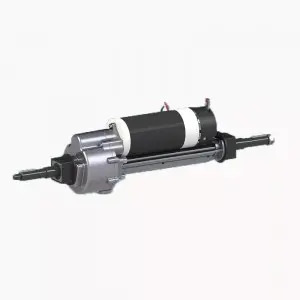The transaxle is a critical component in a vehicle’s drivetrain, responsible for transmitting power from the engine to the wheels. It combines the functions of a transmission (changing gears) and a differential (distributing power to the wheels). The core of the transaxle is the final reducer, which is a key component that plays a vital role in the overall performance of the vehicle.
The final drive in the transaxle is responsible for transferring power from the transaxle to the wheels, while also providing the necessary gear reduction to ensure optimal performance. This component consists of a set of gears that work together to convert the high-speed, low-torque output of the transaxle into the low-speed, high-torque power needed to drive the wheels. By doing so, the final drive enables the vehicle to achieve the required speed and torque under a variety of driving conditions.
One of the primary functions of the final drive is to provide the necessary torque multiplication to propel the vehicle forward. When the engine produces power, it is sent to the transaxle, which then transmits it to the final drive. The final drive gears then come to work to increase the torque before transferring it to the wheels. This torque multiplication is critical in enabling the vehicle to accelerate from a standstill and climb steep hills with ease.
In addition to torque multiplication, the final drive also plays a vital role in determining the vehicle’s top speed. By utilizing a combination of gears with different ratios, the final drive adjusts the speed of the wheels based on engine speed. This allows the vehicle to achieve higher speeds while maintaining optimal engine performance. The final drive’s gear ratios have been carefully designed to balance acceleration, top speed and fuel efficiency, ensuring a well-rounded driving experience.
In addition, the transaxle’s final drive is critical to the vehicle’s overall handling and stability. By distributing power to the wheels, final drive ensures both wheels receive the same torque, preventing wheel spin and improving traction. This is especially important when cornering, as the final drive helps the wheels rotate at different speeds, allowing the vehicle to turn smoothly and safely.
The design and construction of the final drive is critical to its performance and durability. High-quality materials and precision engineering are critical to ensuring that the gears within the final drive can withstand the stress of transmitting power to the wheels. Additionally, proper lubrication and cooling mechanisms are employed to maintain optimal operating temperatures and reduce gear wear, ultimately extending the life of the final drive.
In summary, the transaxle’s final drive is a fundamental component that has a significant impact on a vehicle’s performance, efficiency, and handling. Final drive plays a key role in delivering a smooth and responsive driving experience by providing torque multiplication, determining top speed and enhancing traction. Its design and construction are engineered to meet the demands of transmitting power to the wheels, making it an integral part of the vehicle’s drivetrain.
Post time: Jul-01-2024


